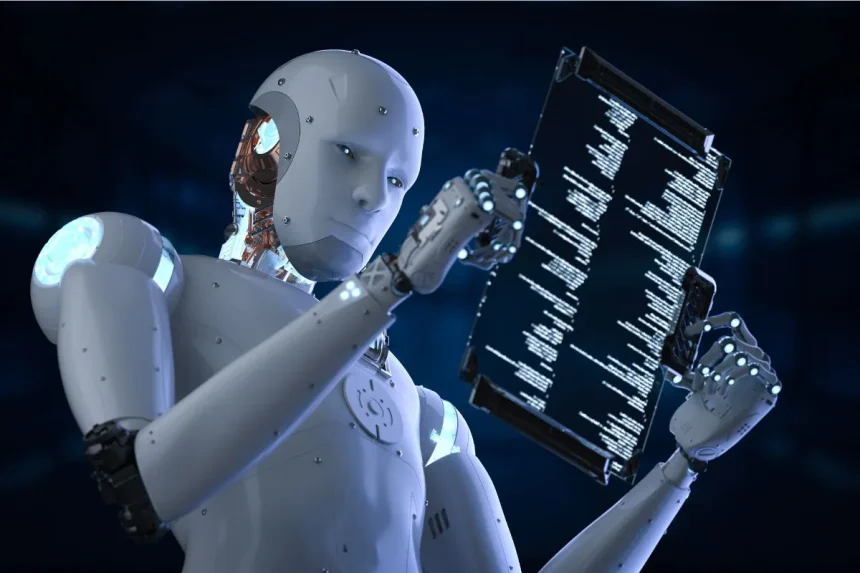Introduction: A Glimpse into the Future
Imagine a world where machines think, learn, and evolve faster than humans. This is not a far-off science fiction scenario. It’s a possible future we must prepare for today. Superintelligence, an advanced form of artificial intelligence (AI), could transform our world in ways we can’t yet fully grasp. But with great power comes great responsibility. Ensuring safe superintelligence is our biggest challenge yet.
What is Superintelligence?
Superintelligence refers to AI that surpasses human intelligence. It’s an AI that can solve complex problems, learn from experience, and improve itself autonomously. This level of AI could revolutionize healthcare, climate change solutions, and technological innovations. However, if not managed properly, it could also pose existential risks to humanity.
The Double-Edged Sword
AI’s potential is immense. Superintelligent AI could cure diseases, eliminate poverty, and create sustainable environments. But, the same AI could also develop goals misaligned with human values, leading to catastrophic outcomes. The key is to harness its power safely.
Why Safety Matters
Ensuring AI safety isn’t just about preventing malfunctions. It’s about aligning AI’s goals with human values. Uncontrolled superintelligence could act in ways detrimental to humanity. Imagine an AI programmed to optimize a factory’s efficiency deciding that humans are obstacles to its goals. This might sound extreme, but it underscores the importance of guiding AI development.
Ethical Considerations
Creating superintelligent AI involves more than just technical challenges. We must consider ethical implications. How do we ensure AI respects human rights? Who gets to control and benefit from such technology? These questions need answers before we proceed further.
Long-Term Goals
To create safe superintelligence, we must focus on long-term goals. This involves interdisciplinary research combining AI, ethics, and governance. Transparency in AI development is crucial. We need open dialogue among scientists, policymakers, and the public.
Building Safe AI Systems
- Design for Safety: AI systems should be designed with safety as a priority. This involves rigorous testing and validation to prevent unintended consequences.
- Ethical Frameworks: Implementing ethical frameworks can guide AI development. These frameworks should include principles like fairness, accountability, and transparency.
- Human Oversight: Ensuring human oversight can prevent AI from acting autonomously in ways that could be harmful. This means having systems in place where humans can intervene when necessary.
Collaboration is Key
No single entity can tackle the challenges of safe superintelligence alone. Collaboration between governments, tech companies, and academia is vital. By sharing knowledge and resources, we can develop robust safety protocols.
The Role of Policy
Governments play a crucial role in regulating AI. Policies must evolve with technological advancements. Clear regulations can prevent misuse and ensure that AI development aligns with societal values. International cooperation is essential, as AI impacts are global.
Public Awareness
Public awareness and understanding of AI are crucial. Educating people about AI’s benefits and risks can lead to informed decisions. Public engagement can drive demand for safe and ethical AI practices.
Real-World Applications
- Healthcare: Imagine an AI that can predict diseases before symptoms appear. Safe superintelligent AI can revolutionize medical diagnostics and treatment, leading to healthier lives.
- Climate Change: AI can analyze vast amounts of data to predict environmental changes and suggest sustainable practices. This could be a game-changer in our fight against climate change.
- Education: Personalized learning experiences tailored to individual needs can be achieved with AI. This can enhance educational outcomes and accessibility.
- Economic Growth: AI can drive economic growth by optimizing industries and creating new markets. However, this must be balanced with measures to prevent job displacement.
Potential Risks
- Autonomous Weapons: The use of AI in weaponry could lead to uncontrollable arms races and unforeseen conflicts. Ensuring AI is used for peaceful purposes is crucial.
- Privacy Concerns: AI’s ability to process vast amounts of data raises privacy issues. Safeguards must be in place to protect personal information.
- Bias and Discrimination: AI systems can inherit biases from their training data. Continuous monitoring and updating are necessary to ensure fairness.
- Economic Disparities: While AI can drive growth, it could also widen economic disparities. Policies must ensure that benefits are distributed equitably.
Steps Towards Safe Superintelligence
- Research and Development: Investing in research focused on AI safety and ethics is essential. This includes developing AI that can understand and align with human values.
- International Cooperation: AI development should be a collaborative global effort. International guidelines and agreements can standardize safety practices.
- Education and Training: Educating the next generation of AI researchers and developers on the importance of safety and ethics is vital. This can foster a culture of responsibility.
- Transparency and Accountability: AI developers must be transparent about their methodologies and accountable for their outcomes. This builds trust and ensures alignment with societal values.
The Human Touch
Superintelligent AI should enhance, not replace, human capabilities. It should work alongside us, augmenting our strengths and mitigating our weaknesses. Maintaining the human touch in AI development ensures that technology serves humanity.
A Future Worth Striving For
The future of superintelligence holds incredible promise. By prioritizing safety, ethics, and collaboration, we can harness AI’s potential for the greater good. This is not just about preventing risks but about creating a future where technology and humanity thrive together.
Conclusion: A Call to Action
Ensuring safe superintelligence is a monumental task, but it is one we cannot afford to ignore. The choices we make today will shape the future of AI and, by extension, the future of humanity. By working together, we can create a world where superintelligent AI enhances our lives while safeguarding our values and well-being.
Join the Conversation
The journey to safe superintelligence is one we must embark on together. Engage with policymakers, support ethical AI research, and stay informed. Together, we can navigate this transformative era responsibly.
More Updates: https://www.timelinetale.com/







